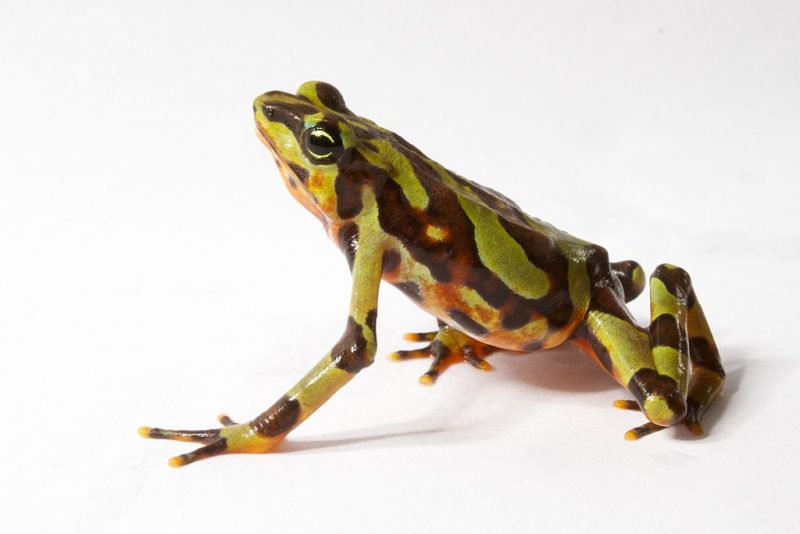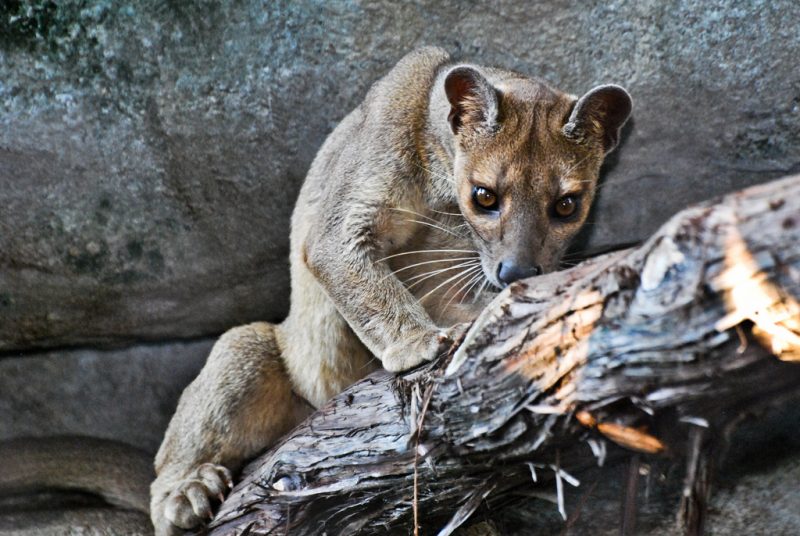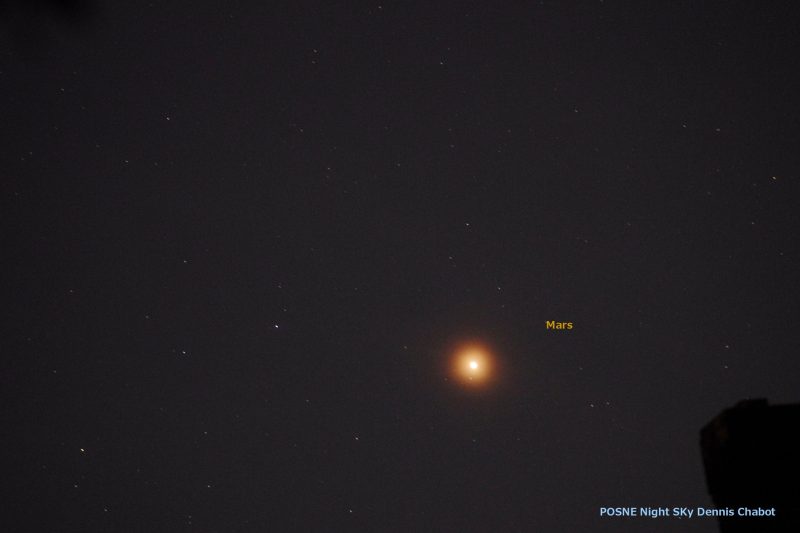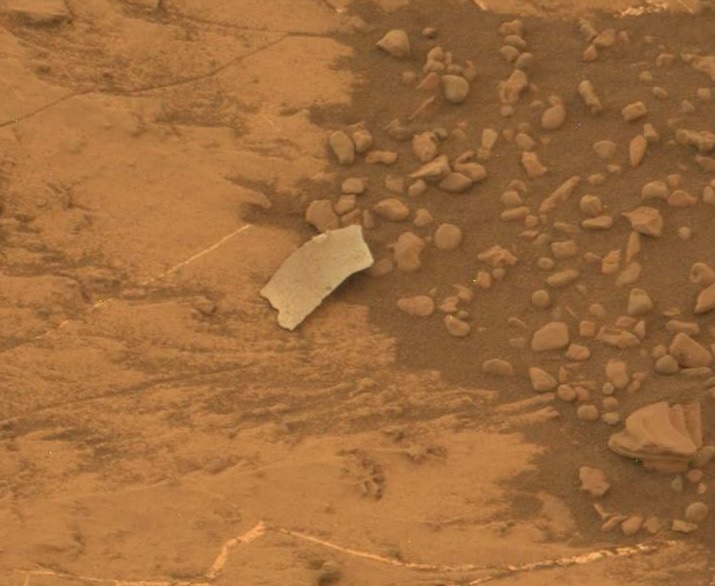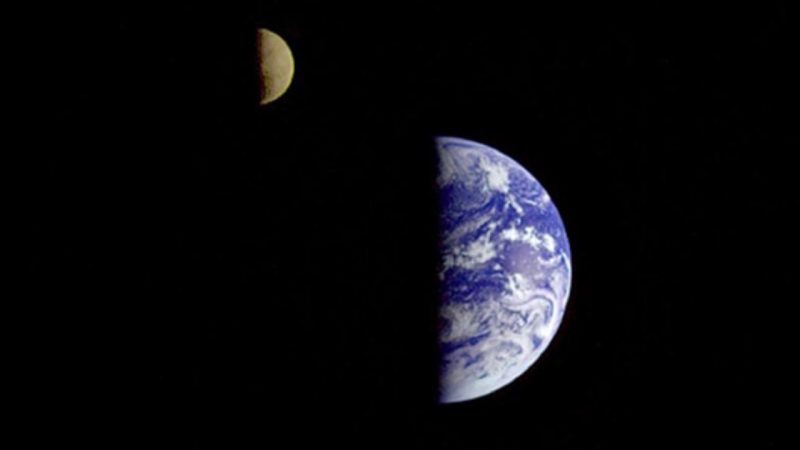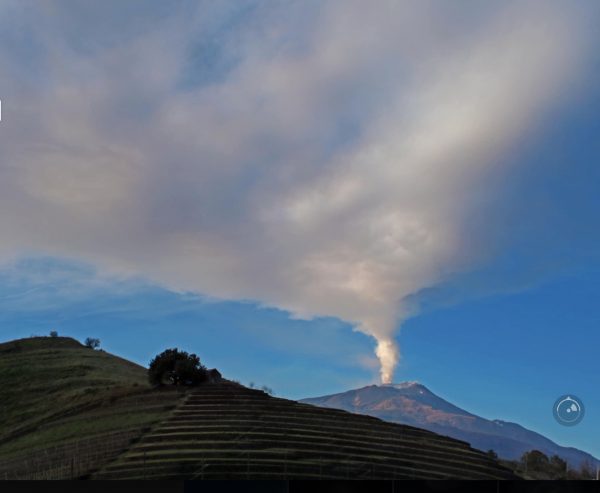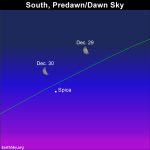Editor's Pick
Green New Deal: what is the progressive plan, and is it technically possible?
The idea, central to Ocasio-Cortez’s campaign, aims to eliminate greenhouse gas pollution – but lacks key political support

Members of the Sunrise Movement advocate for the Green New Deal in Nancy Pelosi’s office on 10 December. Photograph: Michael Brochstein/Zuma Wire/Rex/Shutterstock
Most US voters would support a “Green New Deal”, for the country to transform its infrastructure with a rapid shift to clean energy. But while the idea is gaining attention on Capitol Hill, it lacks key political support.
According to a survey from the Yale Climate Change Communicationprogram, 81% of voters backed its description of a Green New Deal.
Similar plans vary in detail, but all are inspired by the New Deal that Franklin Delano Roosevelt launched to battle the effects of the Great Depression. The idea was central to the high-profile campaign of Alexandria Ocasio-Cortez, the young Democratic socialist from New York who won a US House seat in November. Ocasio-Cortez and the youth-led Sunrise Movement are encouraging Democrats, who will retake the House majority in January, to produce a blueprint.
Their Green New Deal would center around creating new jobs and lessening inequality. Aiming to virtually eliminate US greenhouse gas pollution in a decade, it would be radical compared with other climate proposals. It would require massive government spending.
Dozens of Democrats have signaled support, including potential 2020 presidential candidates Bernie Sanders and Cory Booker. This month, New York’s Governor Andrew Cuomo said his state would launch its own Green New Deal, seeking carbon-neutral electricity by 2040.
But Nancy Pelosi, Democrats’ nominee to run the House, has not agreed to direct a select committee on climate change to focus on the strategy.
Green New Deal: what is the progressive plan, and is it technically possible? by Emily Holden, Environment, Guardian, Dec 29, 2018
Links posted on Facebook
Sun Dec 23, 2018
- Discovery of recent Antarctic ice sheet collapse raises fears of a new global flood by Paul Voosen, Science, Dec 18, 2018
- New research, December 10-16, 2018 by Ari Jokimäki, Skeptical Science, Dec 21, 2018
- State of the Climate 2018: Bureau of Meteorology and CSIRO by Michael Grose & Lynette Bettio, The Conversation AU, Dec 20, 2018
- Kids, it’s time to give your parents 'the talk.' Not that one, the one on climate change., Opinion by Michael A Smyer, USA Today, Dec 20, 2018
- Climate change is shrinking winter snowpack, which harms Northeast forests year-round by Andrew Reinmann & Pamela Templar, The Conversation US, Dec 3, 2018
- Bending low with Bated breath by Gavin Schmidt, RealClimate, Dec 22, 2018
- Melting Arctic ice is now pouring 14,000 tons of water per second into the ocean, scientists find by Chris Mooney, Energy & Environment, Washington Post, Dec 21, 2018
- Incoming Democrat Wants to Make Climate a 2020 Election Issue by Anne C Mulkern, E & E News/Scientific American, Dec 21, 2018
Mon Dec 24, 2018
- EU reaches coal subsidy phase-out deal – with caveat for Poland by Frédéric Simon, Euractiv/Climate Home, Dec 19, 2018
- Climate change talk will be all hot air, until developed world changes wasteful energy habits, Opinion by A. W. Jayawardena & Kennedy Town, South China Morning Post, Dec 23, 2018
- People power must take on Trump’s climate suicide pact by Jean Su, Climate Home News, Dec 21, 2018
- A Year of Climate Change Evidence: Notes from a Science Reporter’s Journal by Bob Berwyn, insideClimate News, Dec 24, 2018
- 'Climate grief': The growing emotional toll of climate change by Avichai Scher, NBC News, Dec 24, 2018
- Australia heatwave to break Christmas weather records with temperatures up to 47C forecast by Lisa Cox, Australia, Guardian, Dec 24, 2018
- BOM warns Australians to expect 'extreme heatwaves' after Christmas by Danny Tran, ABC News (Australia), Dec 24, 2018
- Father Christmas’s winter wonderland homes are hotting up by Jonathan Watts, Environment, Guardian, Dec 24, 2018
Tue Dec 25, 2018
- Advocates Shouldn’t Be Afraid to Tell the Truth About Climate Change by Jeremy Deaton, Nexus Media News, Dec 17, 2018
- Western Drought Ranks among the Worst of the Last Millennium by Andrea Thompson, Scientific American, Dec 24, 2018
- Bolsonaro, Paris and 1.5C: a guide to our top stories of 2018 by Megan Darby, Climate Home, Dec 21, 2018
Wed Dec 26, 2018
- Eight trillion tonnes of Arctic ice lost since 1971 by William Colgan, Glacier Bytes, Dec 20, 2018
- To win the race against catastrophic climate change, we need to go carbon-negative now, Opinion by Joanna Underwood, Thomson Reuters Foundation, Dec 21, 2018
- The Changing Face of Climate Diplomacy by Molly Taft, Nexus Media News, Dec 19, 2018
- Thinking about Climate on a Dark, Dismal Morning., Opinion by Kate Marvel, Hot Planet, Scientific American, Dec 25, 2018
- Why don’t we care about climate change?, Opinion by Dan Gardner, The Globe & Mail, Dec 21, 2018
- The Optimistic Activists for a Green New Deal: Inside the Youth-Led Singing Sunrise Movement by Emily Witt, The New Yorker, Dec 23, 2018
Thu Dec 27, 2018
- Global warming ‘hiatus’ is the climate change myth that refuses to die by Kevin Cowtan & Stephan Lewandowsky, The Conversation UK, Dec 19, 2018
- It's warm water now': climate change strands sea turtles on Cape Cod shores by Josh Wood, Environment, Guardian, Dec 26, 2018
- As Climate Lawsuits Grow Worldwide, Legal Strategies Evolve Too by Jeffrey Williams, Climate Liability News, Dec 26, 2018
- After Back-to-Back Hurricanes, North Carolina Reconsiders Climate Change by James Bruggers, InsideClimate News, Dec 27, 2018
- Climate change: Huge costs of warming impacts in 2018 by Matt McGrath, Science & Health, BBC News, Dec 27, 2018
- The Next Climate Frontier: Predicting a Complex Domino Effect by Annie Sneed, Scientific American, Dec 27, 2018
Fri Dec 28, 2018
- 'Silent emergency' as heat risks rise in Hong Kong - and globally by Marianne Bray, Thomson Reuters Foundation, Dec 24, 2018
- France, Home of the Paris Agreement, Faces Lawsuit for Lack of Climate Progress by Dana Drugmand, Climate Liability News, Dec 20, 2018
- In 1993 my agency warned of climate change. In 1995 it was abolished, Opinion by William Westermeyer, Environment, Guardian, Dec 27. 2018
- Florence bathed NC in raw sewage. New figures show it was even worse than we thought. by John Murawski, The News Observer (Raleigh, NC), Dec 24, 2018
- ‘Green New Deal’ divides Democrats intent on addressing climate change by Elise Viebeck & David Weigel, Power Post, Washington Post, Dec 27, 2018
- Activists, faith leaders hold 10-day fast and prayer for climate change by Brooke Randle, Mountain Express (Asheville, NC), Dec 22, 2018
- EPA to make it harder to tighten mercury rules in the future by Brady Dennis & Juliet Eilperin, Energy & Environment, Washington Post, Dec 28, 2018
- Climate and energy news in 2018 actually wasn’t all bad by Umair Irfan & David Roberts, Energy & Environment, Vox, Dec 28, 2018
Sat Dec 29, 2018
- Aborted Fuel Tax Initiative in France: Its Ramifications for Green Growth, Opinion by Mizan Khan and Dereje Senshaw, Inter Press Service (IPS). Dec 27, 2018
- Scott Pruitt never gave up EPA plans to debate climate science, records show by Emily Holden, Environment, Guardian, Dec 22, 2018
- Climate change: six positive news stories you probably missed this year by Mike Wood, Anna Pigott, Daniele Malerba, Parakram Pyakurel, Rick Greenough, Rory Telford, & Stuart Galloway, The Conversation UK, Dec 28, 2018
- How Climate Change Is Affecting Glaciers Around The World by Francie Diep, Environment, Pacific Standard, Dec 26, 2018
- Karen Castor named to lead restored House panel on climate change, AP/Guardian, Dec 28, 2018
- Green New Deal: what is the progressive plan, and is it technically possible? by Emily Holden, Environment, Guardian, Dec 29, 2018
from Skeptical Science http://bit.ly/2AjTHAw
Editor's Pick
Green New Deal: what is the progressive plan, and is it technically possible?
The idea, central to Ocasio-Cortez’s campaign, aims to eliminate greenhouse gas pollution – but lacks key political support

Members of the Sunrise Movement advocate for the Green New Deal in Nancy Pelosi’s office on 10 December. Photograph: Michael Brochstein/Zuma Wire/Rex/Shutterstock
Most US voters would support a “Green New Deal”, for the country to transform its infrastructure with a rapid shift to clean energy. But while the idea is gaining attention on Capitol Hill, it lacks key political support.
According to a survey from the Yale Climate Change Communicationprogram, 81% of voters backed its description of a Green New Deal.
Similar plans vary in detail, but all are inspired by the New Deal that Franklin Delano Roosevelt launched to battle the effects of the Great Depression. The idea was central to the high-profile campaign of Alexandria Ocasio-Cortez, the young Democratic socialist from New York who won a US House seat in November. Ocasio-Cortez and the youth-led Sunrise Movement are encouraging Democrats, who will retake the House majority in January, to produce a blueprint.
Their Green New Deal would center around creating new jobs and lessening inequality. Aiming to virtually eliminate US greenhouse gas pollution in a decade, it would be radical compared with other climate proposals. It would require massive government spending.
Dozens of Democrats have signaled support, including potential 2020 presidential candidates Bernie Sanders and Cory Booker. This month, New York’s Governor Andrew Cuomo said his state would launch its own Green New Deal, seeking carbon-neutral electricity by 2040.
But Nancy Pelosi, Democrats’ nominee to run the House, has not agreed to direct a select committee on climate change to focus on the strategy.
Green New Deal: what is the progressive plan, and is it technically possible? by Emily Holden, Environment, Guardian, Dec 29, 2018
Links posted on Facebook
Sun Dec 23, 2018
- Discovery of recent Antarctic ice sheet collapse raises fears of a new global flood by Paul Voosen, Science, Dec 18, 2018
- New research, December 10-16, 2018 by Ari Jokimäki, Skeptical Science, Dec 21, 2018
- State of the Climate 2018: Bureau of Meteorology and CSIRO by Michael Grose & Lynette Bettio, The Conversation AU, Dec 20, 2018
- Kids, it’s time to give your parents 'the talk.' Not that one, the one on climate change., Opinion by Michael A Smyer, USA Today, Dec 20, 2018
- Climate change is shrinking winter snowpack, which harms Northeast forests year-round by Andrew Reinmann & Pamela Templar, The Conversation US, Dec 3, 2018
- Bending low with Bated breath by Gavin Schmidt, RealClimate, Dec 22, 2018
- Melting Arctic ice is now pouring 14,000 tons of water per second into the ocean, scientists find by Chris Mooney, Energy & Environment, Washington Post, Dec 21, 2018
- Incoming Democrat Wants to Make Climate a 2020 Election Issue by Anne C Mulkern, E & E News/Scientific American, Dec 21, 2018
Mon Dec 24, 2018
- EU reaches coal subsidy phase-out deal – with caveat for Poland by Frédéric Simon, Euractiv/Climate Home, Dec 19, 2018
- Climate change talk will be all hot air, until developed world changes wasteful energy habits, Opinion by A. W. Jayawardena & Kennedy Town, South China Morning Post, Dec 23, 2018
- People power must take on Trump’s climate suicide pact by Jean Su, Climate Home News, Dec 21, 2018
- A Year of Climate Change Evidence: Notes from a Science Reporter’s Journal by Bob Berwyn, insideClimate News, Dec 24, 2018
- 'Climate grief': The growing emotional toll of climate change by Avichai Scher, NBC News, Dec 24, 2018
- Australia heatwave to break Christmas weather records with temperatures up to 47C forecast by Lisa Cox, Australia, Guardian, Dec 24, 2018
- BOM warns Australians to expect 'extreme heatwaves' after Christmas by Danny Tran, ABC News (Australia), Dec 24, 2018
- Father Christmas’s winter wonderland homes are hotting up by Jonathan Watts, Environment, Guardian, Dec 24, 2018
Tue Dec 25, 2018
- Advocates Shouldn’t Be Afraid to Tell the Truth About Climate Change by Jeremy Deaton, Nexus Media News, Dec 17, 2018
- Western Drought Ranks among the Worst of the Last Millennium by Andrea Thompson, Scientific American, Dec 24, 2018
- Bolsonaro, Paris and 1.5C: a guide to our top stories of 2018 by Megan Darby, Climate Home, Dec 21, 2018
Wed Dec 26, 2018
- Eight trillion tonnes of Arctic ice lost since 1971 by William Colgan, Glacier Bytes, Dec 20, 2018
- To win the race against catastrophic climate change, we need to go carbon-negative now, Opinion by Joanna Underwood, Thomson Reuters Foundation, Dec 21, 2018
- The Changing Face of Climate Diplomacy by Molly Taft, Nexus Media News, Dec 19, 2018
- Thinking about Climate on a Dark, Dismal Morning., Opinion by Kate Marvel, Hot Planet, Scientific American, Dec 25, 2018
- Why don’t we care about climate change?, Opinion by Dan Gardner, The Globe & Mail, Dec 21, 2018
- The Optimistic Activists for a Green New Deal: Inside the Youth-Led Singing Sunrise Movement by Emily Witt, The New Yorker, Dec 23, 2018
Thu Dec 27, 2018
- Global warming ‘hiatus’ is the climate change myth that refuses to die by Kevin Cowtan & Stephan Lewandowsky, The Conversation UK, Dec 19, 2018
- It's warm water now': climate change strands sea turtles on Cape Cod shores by Josh Wood, Environment, Guardian, Dec 26, 2018
- As Climate Lawsuits Grow Worldwide, Legal Strategies Evolve Too by Jeffrey Williams, Climate Liability News, Dec 26, 2018
- After Back-to-Back Hurricanes, North Carolina Reconsiders Climate Change by James Bruggers, InsideClimate News, Dec 27, 2018
- Climate change: Huge costs of warming impacts in 2018 by Matt McGrath, Science & Health, BBC News, Dec 27, 2018
- The Next Climate Frontier: Predicting a Complex Domino Effect by Annie Sneed, Scientific American, Dec 27, 2018
Fri Dec 28, 2018
- 'Silent emergency' as heat risks rise in Hong Kong - and globally by Marianne Bray, Thomson Reuters Foundation, Dec 24, 2018
- France, Home of the Paris Agreement, Faces Lawsuit for Lack of Climate Progress by Dana Drugmand, Climate Liability News, Dec 20, 2018
- In 1993 my agency warned of climate change. In 1995 it was abolished, Opinion by William Westermeyer, Environment, Guardian, Dec 27. 2018
- Florence bathed NC in raw sewage. New figures show it was even worse than we thought. by John Murawski, The News Observer (Raleigh, NC), Dec 24, 2018
- ‘Green New Deal’ divides Democrats intent on addressing climate change by Elise Viebeck & David Weigel, Power Post, Washington Post, Dec 27, 2018
- Activists, faith leaders hold 10-day fast and prayer for climate change by Brooke Randle, Mountain Express (Asheville, NC), Dec 22, 2018
- EPA to make it harder to tighten mercury rules in the future by Brady Dennis & Juliet Eilperin, Energy & Environment, Washington Post, Dec 28, 2018
- Climate and energy news in 2018 actually wasn’t all bad by Umair Irfan & David Roberts, Energy & Environment, Vox, Dec 28, 2018
Sat Dec 29, 2018
- Aborted Fuel Tax Initiative in France: Its Ramifications for Green Growth, Opinion by Mizan Khan and Dereje Senshaw, Inter Press Service (IPS). Dec 27, 2018
- Scott Pruitt never gave up EPA plans to debate climate science, records show by Emily Holden, Environment, Guardian, Dec 22, 2018
- Climate change: six positive news stories you probably missed this year by Mike Wood, Anna Pigott, Daniele Malerba, Parakram Pyakurel, Rick Greenough, Rory Telford, & Stuart Galloway, The Conversation UK, Dec 28, 2018
- How Climate Change Is Affecting Glaciers Around The World by Francie Diep, Environment, Pacific Standard, Dec 26, 2018
- Karen Castor named to lead restored House panel on climate change, AP/Guardian, Dec 28, 2018
- Green New Deal: what is the progressive plan, and is it technically possible? by Emily Holden, Environment, Guardian, Dec 29, 2018
from Skeptical Science http://bit.ly/2AjTHAw


